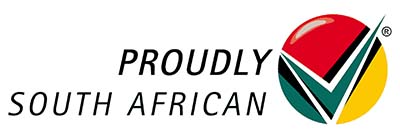Here are some of the key security features that asset management software should have:
- User authentication and authorization
- Data encryption
- Audit trails
- Backups and disaster recovery
- Regular security updates
Today, let’s dive into a topic that’s as crucial as keeping your morning coffee strong – the security features in asset management software.
We all know how valuable our assets are, so ensuring their safety in the digital realm is non-negotiable.
Key Facts
- Highlight the importance of security in asset management software.
- Key Security Features: Discuss user authentication, data encryption, audit trails, backups, and security updates.
- Choosing a Reliable Vendor: Emphasize the significance of selecting a vendor with a good security reputation.
- Data Integrity Assurance: Explain the importance of data validation, access controls, and backup protocols.
- Reinforce the commitment to safeguarding assets and encourage prioritizing security when choosing software.
Understanding Security Features
Asset management software helps organizations track and manage their physical and digital assets.
This software can be used to track everything from computers and vehicles to furniture and inventory.
Security is a critical concern for asset management software, as it stores sensitive information about an organization’s assets.
Here are some of the key security features that asset management software should have:
- User authentication and authorization: The software should require users to authenticate themselves before they can access the system. This can be done through a username and password, multi-factor authentication, or other methods. The software should also have a way to authorize users for specific tasks and data access.
- Data encryption: The software should encrypt all sensitive data, both at rest and in transit. This will help to protect the data from unauthorized access, even if the software is hacked.
- Audit trails: The software should keep track of all user activity. This will help to identify any suspicious activity and track down the source of any problems.
- Backups and disaster recovery: The software should have a robust backup and disaster recovery plan in place. This will ensure that the data is protected in the event of a system failure or natural disaster.
- Regular security updates: The software vendor should regularly release security updates to fix vulnerabilities and patch bugs. It is important to keep the software up to date to ensure that it is as secure as possible.
In addition to these features, it is also important to choose an asset management software vendor that has a good reputation for security.
You should ask the vendor about their security practices and how they protect customer data.
Data Integrity Assurance
Data integrity assurance is a crucial aspect of asset management software, alongside the security features you mentioned.
It ensures that the data stored within the software is accurate, complete, consistent, and reliable throughout its lifecycle.
Here are some key aspects of data integrity assurance in asset management software:
Data Validation:
- Input validation: Prevents invalid data from entering the system through checks like data type, format, and range restrictions.
- Business rule validation: Ensures data adheres to specific business logic, like unique asset identifiers or valid locations.
- Data consistency checks: Identifies and corrects inconsistencies within the data, such as duplicate entries or conflicting information.
Data Access Controls:
- Role-based access control: Limits user access to data based on their roles and permissions, preventing unauthorized modifications.
- Audit trails: Records all data access and modification activities, enabling traceability and accountability.
- Change management: Defines and enforces procedures for data changes, ensuring proper approval and documentation.
Data Backup and Recovery:
- Regular backups: Creates copies of the data at defined intervals to prevent data loss in case of system failures.
- Disaster recovery plan: Defines procedures for restoring the data and system in case of major disruptions.
- Data version control: Tracks changes made to data over time, allowing for rollback to previous versions if necessary.
Conclusion
So, there you have it – a sneak peek into the security blanket we wrap around your assets. It’s not just about managing assets; it’s about safeguarding them like they’re family.
Next time you’re shopping for asset management software, remember: security isn’t just a feature; it’s a promise.
Your assets deserve the best, and we’re here to deliver! Stay secure, stay savvy!








